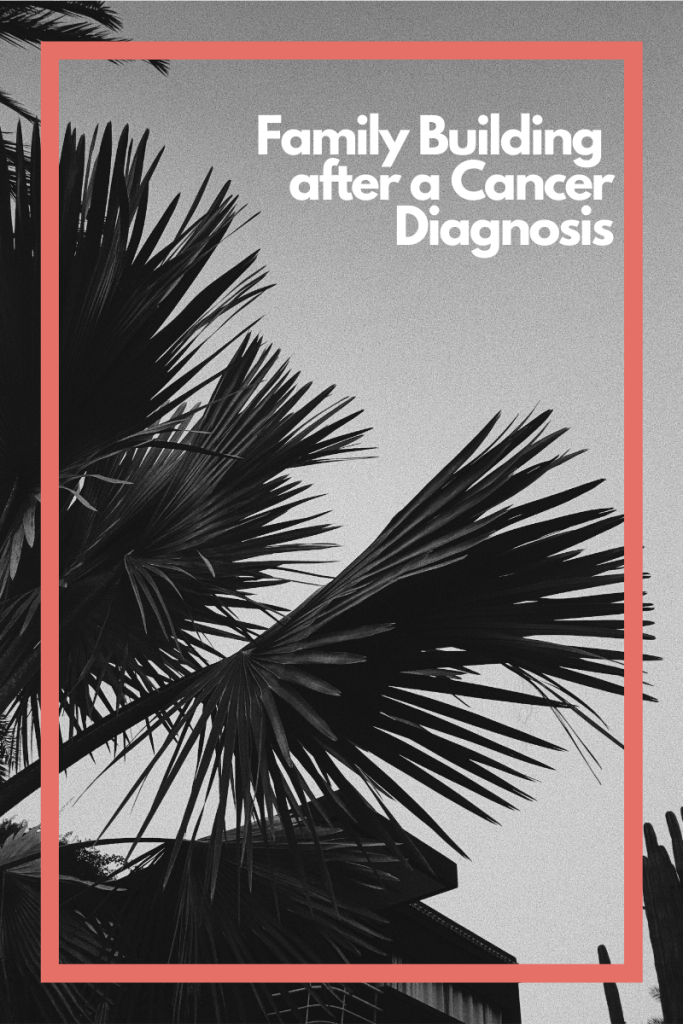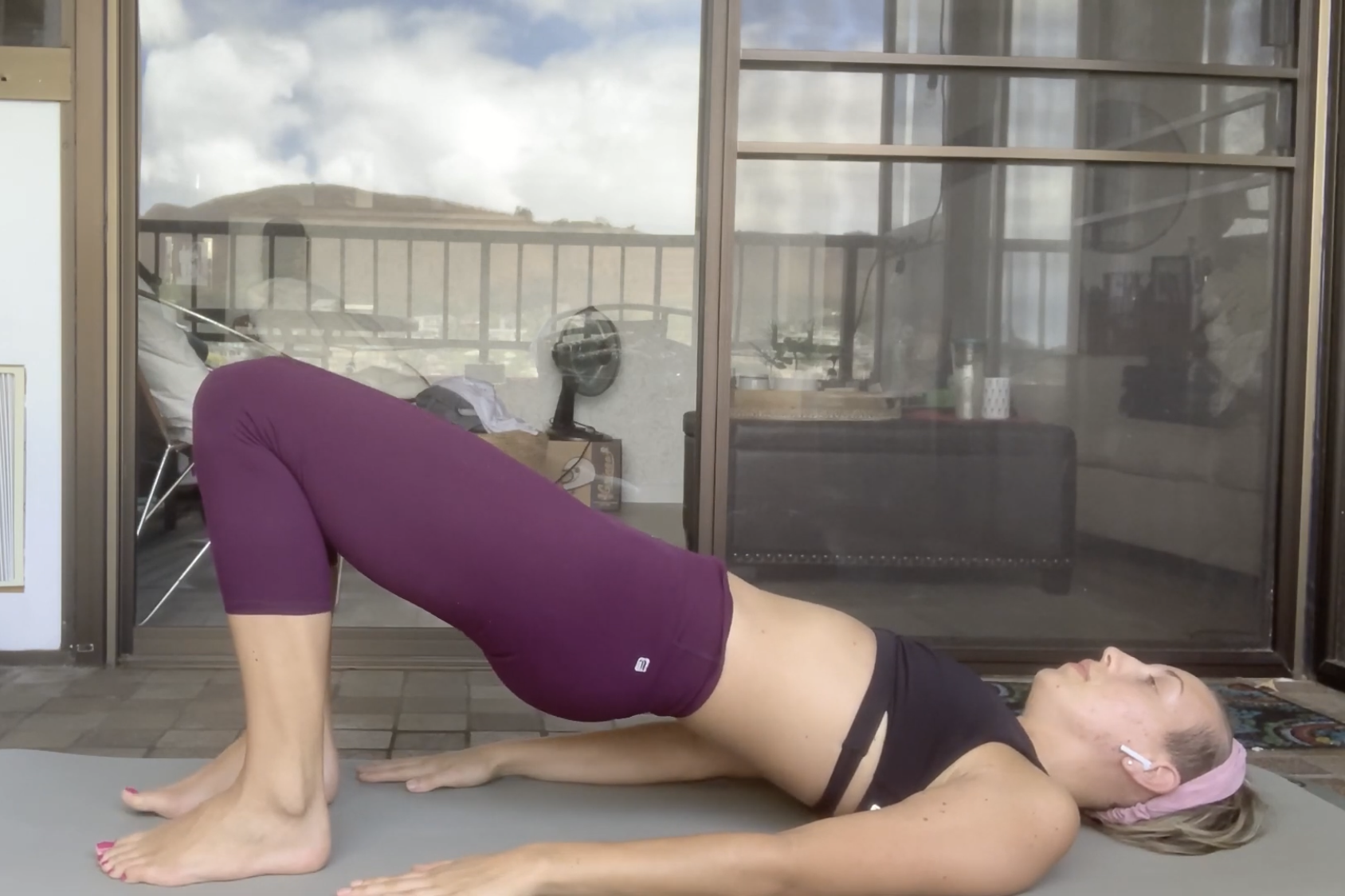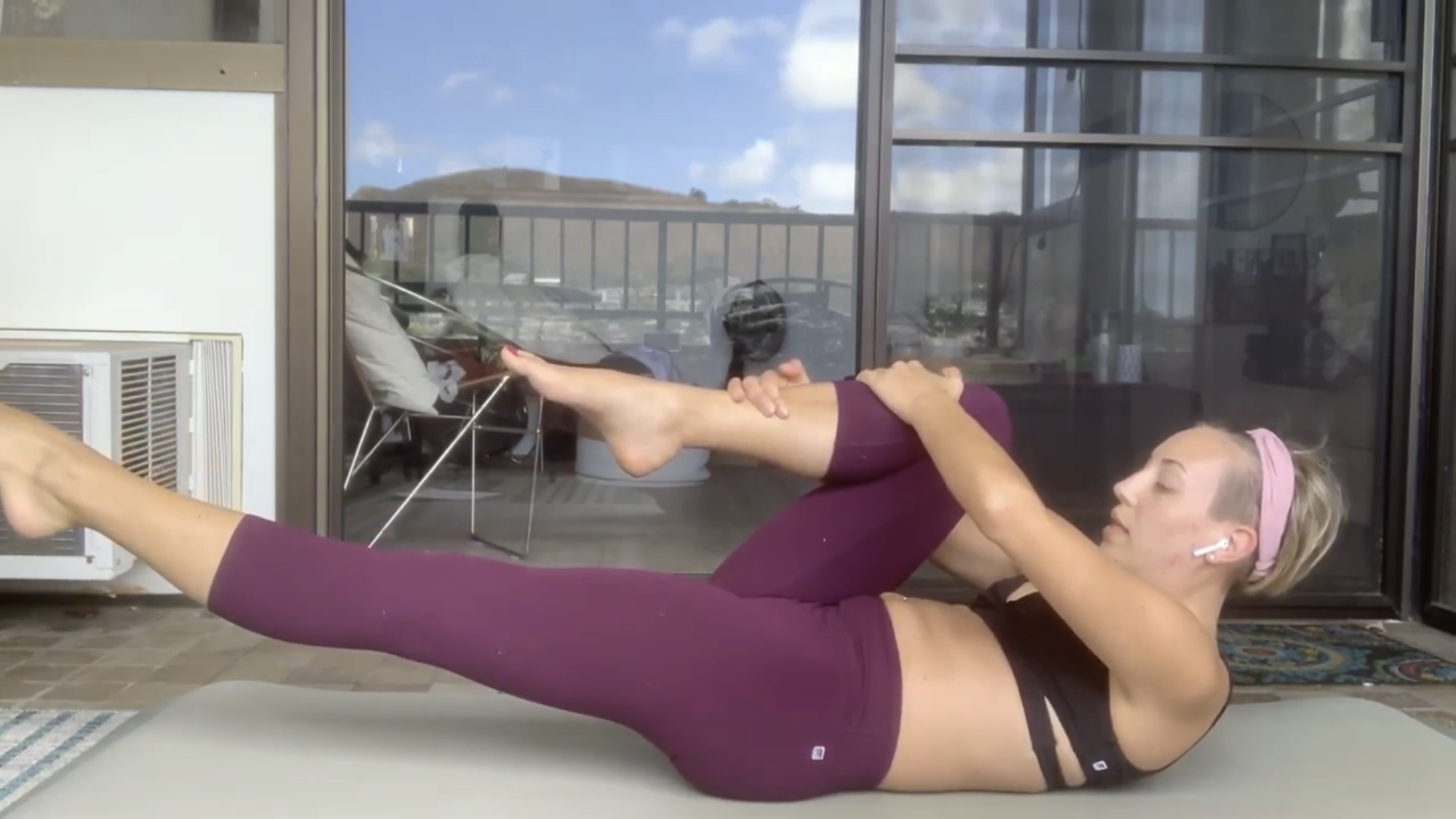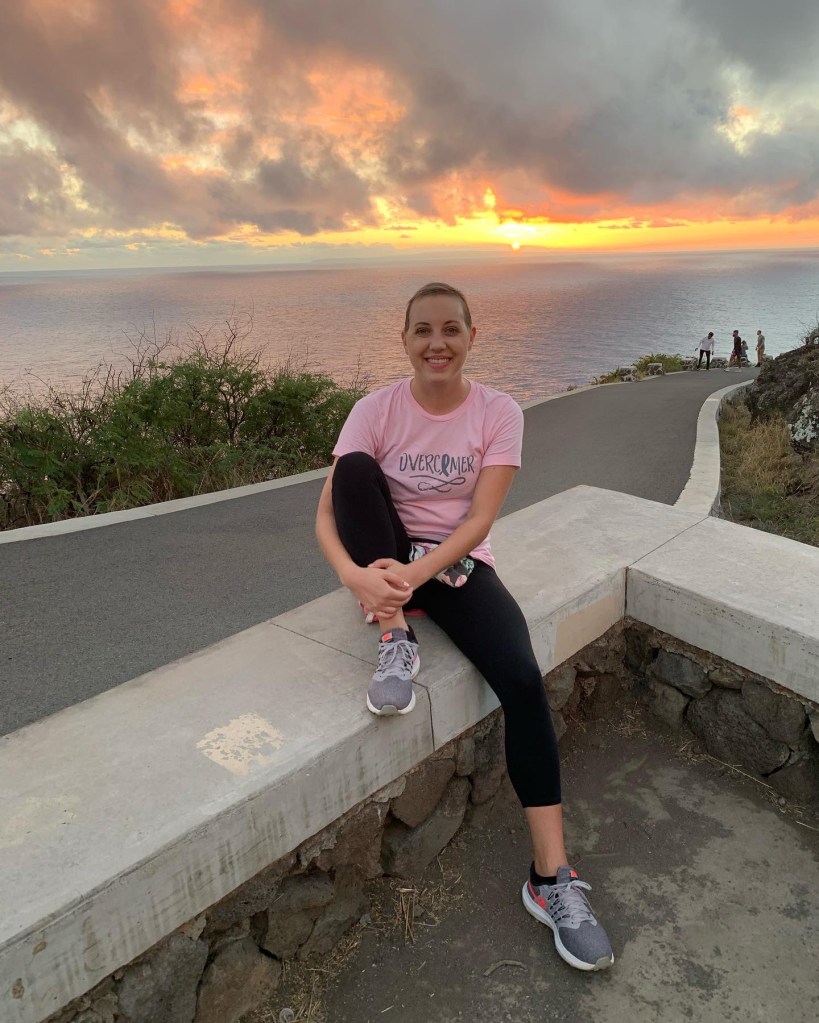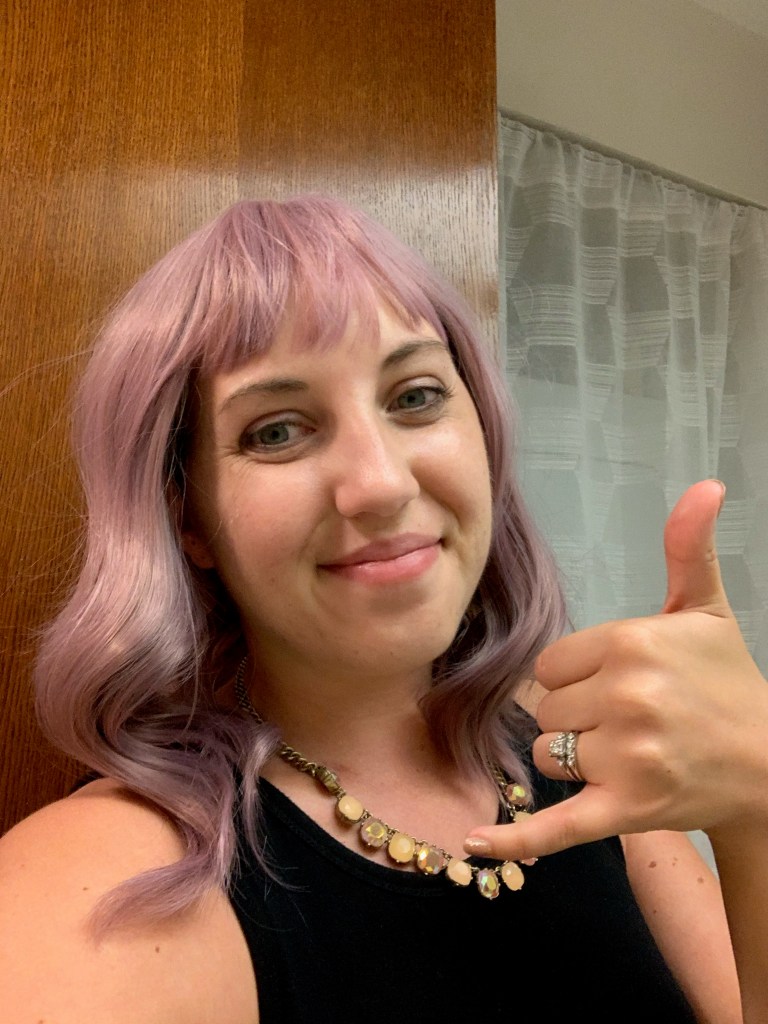Hi – it’s been a minute and…SURPRISE! If you didn’t already know – I’m pregnant! My husband and I are so thrilled to be expecting our first child in December, especially because we weren’t sure what this ride would be like for us. It’s such a blessing to be here three years post-diagnosis sharing this news!

I wanted to take this opportunity to write about a few of the normal and not-so-normal experiences I’ve had during this post-cancer pregnancy, because there are a few things I’ve had to consider beyond what someone without my medical history might experience. I also want to acknowledge that every person’s experience with conception and pregnancy is so different, and with so many dealing with the heartbreak of infertility, I want to be as respectful as possible. What works for me, may not be helpful to your experience. I send my love to anyone on their family building journey, however that may look!
Conception Concerns
Conceiving naturally after breast cancer treatment was NOT a given. You’ve all read my saga of a fertility preservation journey through cancer… Thankfully, though, natural conception is not impossible! I remember speaking with my fertility specialist when we were starting the egg-freezing process prior to chemo and asking him what percentage of people do conceive naturally after treatment and then proceeded to blurt out “Well, you probably don’t get to see those patients return anyway!” when he told me it’s “not likely.”
From the moment I realized that infertilty after cancer was looming, I decided to change my mindset. I decided I’d do whatever I could to support my body during and beyond cancer treatments to give me the best chance of conceiving naturally (because, not sure if you’ve heard, but IVF is expensive!!!).
Here are some of the ways I have tried to support my body’s ability to conceive from early in my diagnosis:
- Eating a well-balanced diet (& actually switching from a primarily plant-based diet to a paleo diet)
- Acupuncture
- Seed cycling for menstrual support
- Supplementing with vitamins, minerals, and antioxidants with guidance from my naturopath
- Tracking my cycle and understanding my norms
- Managing stress with meditation, tapping, and time outside
- Positive mindset and visualization
- Exercise!
- Medically – Zoladex to protect my ovaries during chemo & Egg-freezing (oocyte cryopreservation) as a “Plan B”
Here’s a cool story for you…
If I haven’t mentioned it here before, I am a HUGE fan of my Oura ring for tracking my cycles and other biohacking purposes. Even before I had missed my period, my ring indicated elevated basal body temperatures and resting heart rate so I knew even before I took my first pregnancy test that I was likely pregnant!
And so I was just lucky (?) that I was able to conceive naturally this time around, but I can honestly say that I did what I thought I needed to do to support that. It may not be feasible or even physically possible for some or may just be all too much for others, but I just wanted to share my personal experience here.
Cancer Screening Change-Up
Prior to pregnancy, I was having an annual mammogram and an annual MRI (staggered every six months) to monitor for any signs of recurrence. I’ve never monitored tumor markers because mine were never elevated, and therefore wouldn’t give an accurate snapshot of my health. With triple negative breast cancer, the risk of recurrence is absolutely highest in the first three years and begins to taper down signficantly after 5 years of being cancer free. I had just celebrated my 3-year diagnosis cancer-versary in April when we found out we were pregnant, so I am definitely not out of the woods and screening are still important.
First of all, for the rule followers…my oncologist did clear me to try for pregnancy, and she knew I was pregnant before I even told my family!
Second of all, I obviously don’t want to cause any harm to the baby by undergoing procedures with high levels of x-rays or heavy metals contrast. So, for screenings throughout pregnancy, I resort to clinical breast exams and should any concerns arise, an ultrasound is safe and the first step we’d take to check everything out.
I continue to do my monthly breast self-exams (don’t listen to what the American Cancer Society says, these continue to be important for everyone!). This has honestly been very difficult for me emotionally throughout pregnancy for several reasons. One, being that I found my lump myself so there is a bit of PTSD there… and, two, because TNBC is notorious for popping up in the pregnant/postpartum phase. With many changes happening in my body during pregnancy (normal), finding a lump is not my favorite thing to think about. I say this only to validate others who may be experiencing the same thing!
Lastly, last year I requested to start doing blood draws twice annually which can specifically detect my tumor’s unique DNA in my system. This test is run by Natera Genetics and is commonly used with more advanced stage disease to ensure treatments are working. It is generally not indicated for early stage survivors as there is no protocol for “next steps” should any elevation of circulating tumor cells be detected.
However, knowing that I was intending to get pregnant and screening options would be limited, my doctor magically got my insurance to cover this for me and my most recent test does NOT indicate any signs of recurrence – yay!
As scary as it can feel to pursue pregnancy and parenthood with a not-so-distant cancer diagnosis, there are options to continue screening throughout pregnancy. I find that mindset is so important, and I remind myself on a daily basis that my baby and I are healthy and thriving through this pregnancy and it keeps me present.
Non-Cancery Curve Balls
Honestly, I’ve been very lucky to have a relatively uneventful pregnancy thus far. I tell most people I did it backwards since I felt so well throughout my first trimester and have had a slow decline in energy and motivation after getting halfway through my second trimester.
I did find out early on that my Rh- blood type means I need a Rhogam shot so my body’s antibodies don’t attack the baby’s if their blood type is Rh+ so I’m heading to get that later today.
I learned the hard way that Paxlovid can be taken during pregnancy if you get COVID-19 with moderate to severe symptoms. However, from my brief research, the U.S. is currently the only country deeming it safe for pregnant women/fetuses so I opted not to take it. I primarily blame COVID (& not the tiny human growing inside) for my listlessness these days…
And, as it turns out, the 1-hour glucose screening test is made to be quite difficult to pass. Obviously, it would not be great to allow someone to go through pregnancy with undiagnosed gestational diabetes. So here I sit, waiting to complete my 3-hour glucose tolerance test. As inconvenient as these tests can be, it’s all for the health of mama and baby, and I’d rather make a few lifestyle changes to get us both safely to somewhere closer to our December due date!

Beyond all that, I’m just immensely grateful to be on this post-cancer, prenatal journey with my incredible hubs and family and friends who’ve been the ultimate support. As I start my third trimester, I am definitely in nesting mode and doing my best to connect to this little soul that I’ll get to bring earthside in a few short months!
I’ll be scaling back my work days at the end of the month, testing out for my official Pilates certifcation in the next few weeks, and prepping for a few upcoming education opportunities on the state and national levels!
My last reminder today is that while we all may have good intentions for Breast Cancer Awareness Month this October, please check who benefits from your dollars spent before you buy anything PINK! My favorite organizations to donate to that support breast cancer research or survivors themselves include:
- Breast Cancer Research Foundation – Largest funder of breaast cancer research in the U.S.
- Triple Negative Breast Cancer Foundation – Funds research for TNBC
- Metavivor – Funds research for Stage IV
- Breast Cancer Hawaii – Supports Hawaii’s breast cancer thrivers
- Rural Gone Urban Foundation – Love Bombs for cancer patients
Click on the links to donate! And don’t forget to do your self-exams and schedule your annual screenings!
Aloha ❤
